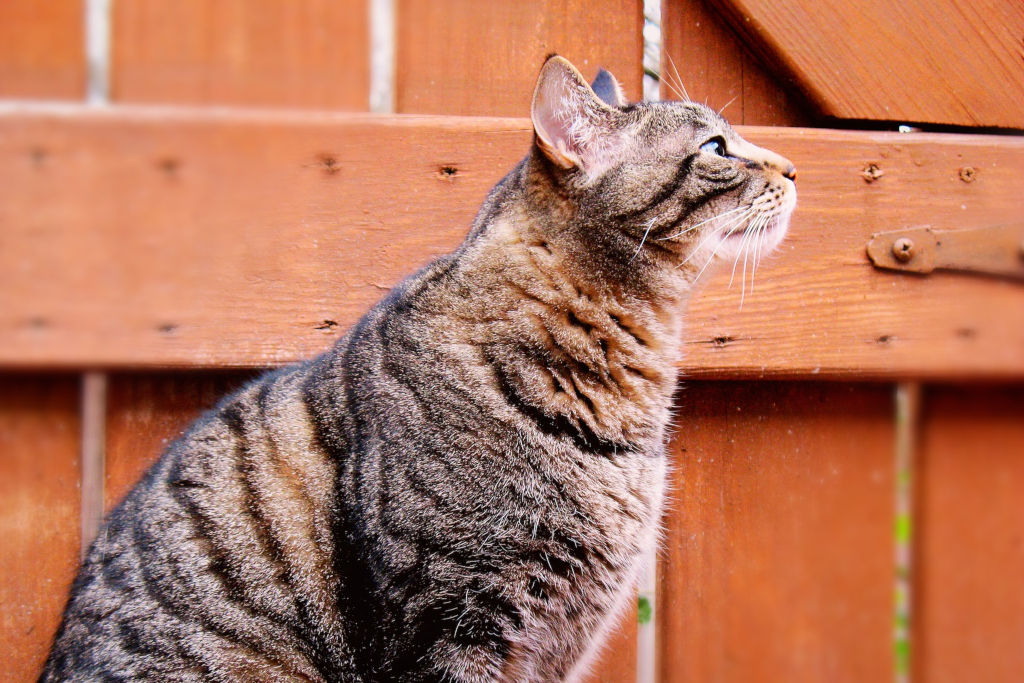As your cat roams the great outdoors, they face a variety of challenges and potential health hazards.
This article will guide you through the vaccines that can help shield your whiskered explorer, ensuring they remain healthy and protected while satisfying their curiosity.
Keep reading to uncover the secrets of tailoring the perfect vaccination plan for your adventurous feline.

Why Outdoor Cats Need Extra Protection
When it comes to outdoor cats, they need extra protection due to the increased risks they face compared to their indoor counterparts.
As they explore the world beyond your home, they may encounter other animals, various parasites, and potential disease carriers. This exposure significantly raises their chances of contracting infections and illnesses.
Vaccines play a crucial role in safeguarding outdoor cats from these threats. They help strengthen your cat’s immune system by preparing it to combat specific diseases, ensuring that if they ever encounter a harmful pathogen, they have a better chance of overcoming it.
In essence, vaccinating your cat not only promotes their well-being but also contributes to a healthier, happier outdoor adventure.
Core Vaccines for Outdoor Cats
Core vaccines are essential for all cats, but outdoor cats may require a more tailored approach depending on their lifestyle, the region they live in, and their breed.
By considering these factors, you can create a personalized vaccination plan to ensure your cat receives the best protection possible. Let’s explore each core vaccine in more detail and discuss how individual factors might affect your decisions.
A. Rabies
Rabies vaccination is crucial for all outdoor cats. The risk of exposure to rabid animals varies depending on your location. In areas with a higher prevalence of rabies, it’s even more important to follow a strict vaccination schedule.
Additionally, if your cat roams near wooded areas or places with abundant wildlife, ensure their rabies vaccination is up to date.
Remember, in many regions, rabies vaccinations are not just a recommendation but a legal requirement due to the fatal nature of the disease.
FVR is a highly contagious respiratory infection that affects all cats, regardless of breed.
Outdoor cats that frequently interact with other felines or explore areas with a high stray cat population face an increased risk of exposure.
In such cases, it’s essential to adhere to the recommended FVR vaccination schedule, which typically involves an initial vaccination at 6-8 weeks of age, followed by a booster shot 3-4 weeks later and then subsequent boosters every 1-3 years, depending on your vet’s recommendation, to minimize the risk of infection.
Moreover, cats recovering from FVR can be carriers for many months, potentially spreading it even if they show no symptoms.
C. Feline calicivirus (FCV)
FCV is another widespread and highly contagious respiratory disease affecting cats. It shares similar symptoms with FVR, but may also cause oral ulcers and joint pain.
FCV affects cats of all breeds, but the risk of exposure is higher for outdoor cats that come into contact with infected animals or contaminated environments, such as areas with shared food and water sources, contaminated litter boxes, or surfaces where the virus can survive for extended periods.
Some regions with high stray cat populations, crowded shelters, or catteries may have a higher prevalence of FCV, making it even more vital to ensure your cat receives the recommended vaccination doses.
D. Feline panleukopenia virus (FPV)
FPV, also known as feline distemper or feline parvovirus, is a severe and potentially fatal disease that affects a cat’s gastrointestinal tract, immune system, and bone marrow. Symptoms include vomiting, diarrhea, and dehydration.
FPV is a severe and highly contagious disease that all cats should be vaccinated against. Certain breeds, such as Siamese and Burmese cats, may be more susceptible to the virus.
If you live in an area where FPV is prevalent, such as regions with high stray cat populations or insufficient vaccination practices, or have a breed with higher susceptibility, try to adhere to the recommended vaccination schedule.

Non-Core Vaccines for Outdoor Cats
While core vaccines are vital for all cats, non-core vaccines are recommended based on a cat’s specific risk factors and lifestyle. Here, we’ll discuss four non-core vaccines and their importance for outdoor cats.
A. Feline leukemia virus
FeLV is a contagious and potentially fatal viral infection that impairs a cat’s immune system, making them more susceptible to various infections and diseases. Contrary to its name, Feline leukemia virus isn’t a form of cancer, but it can increase a cat’s risk of developing certain cancers.
Outdoor cats are at a higher risk of contracting FeLV due to increased contact with infected cats or contaminated environments.
If your cat frequently interacts with other felines, especially in areas with high stray or feral cat populations, consider getting them vaccinated against FeLV.
It’s also essential to test your cat for FeLV before administering the vaccine, as it’s ineffective on cats already infected with the virus.
B. Feline immunodeficiency virus
FIV is a slow-progressing virus that weakens a cat’s immune system, making them more prone to infections. Outdoor cats, particularly those prone to fighting or roaming vast territories, face a higher risk of exposure to FIV.
Unfortunately, the FIV vaccine is not universally recommended due to concerns about its effectiveness and potential interference with FIV testing. Discuss your cat’s specific risks and needs with your veterinarian to determine if the FIV vaccine is suitable for your cat.
C. Chlamydia felis
Chlamydia felis is a bacterial infection that can cause conjunctivitis and respiratory issues in cats. The risk of exposure is higher for outdoor cats that come in contact with infected animals.
The Chlamydia felis vaccine is typically administered to cats living in multi-cat households, shelters, or catteries, where the risk of infection is elevated. Consult your veterinarian to assess whether your outdoor cat could benefit from this vaccine.
D. Bordetella bronchiseptica
Bordetella bronchiseptica is a bacterial infection that can lead to respiratory problems in cats.
While the infection is more common in crowded environments like shelters, outdoor cats may also be at risk, especially if they come in contact with infected cats or contaminated surfaces.
The Bordetella vaccine is typically administered intranasally and is recommended for cats with a higher risk of exposure, such as those attending cat shows or living in multi-cat households.
Note:
Risks and Benefits: Customizing Your Cat’s Vaccination Plan
Creating a customized vaccination plan for your outdoor cat is essential for providing the best possible protection.
A tailored plan considers your cat’s unique lifestyle, environment, and specific needs while balancing the potential benefits of non-core vaccines against any associated risks. Follow these steps to develop a personalized vaccination plan for your feline friend:
- Understand your cat’s risk factors. Assess your cat’s individual risk factors, including their daily habits, roaming patterns, and likelihood of coming into contact with other animals. Take into account factors like local disease prevalence, your cat’s age, breed, and overall health.
- Consult with your veterinarian. Your veterinarian is an invaluable resource when customizing your cat’s vaccination plan. They can help you determine which core and non-core vaccines are necessary based on your cat’s risk factors and lifestyle. Share any concerns or questions with your vet to ensure a comprehensive understanding of your cat’s vaccination needs.
- Weigh the risks and benefits. Non-core vaccines offer additional protection, but they also come with potential risks, such as adverse reactions or over-vaccination. Work with your veterinarian to balance these factors and make informed decisions about which non-core vaccines are appropriate for your cat.
- Stay up-to-date on local disease prevalence. Keep informed about disease prevalence in your region. Local animal shelters, veterinary clinics, and online resources can provide valuable information about disease outbreaks and trends in your area, helping you make more informed decisions about your cat’s vaccination needs.
- Keep track of your cat’s vaccination history. Maintain a record of your cat’s vaccinations, including the dates they were administered and any reactions or side effects observed. This information can be helpful when discussing your cat’s vaccination needs with your veterinarian and ensuring they remain up-to-date with their vaccinations.
- Adjust the plan as needed. A cat’s vaccination plan should be flexible and adapt to any changes in their lifestyle or environment. If you move to a new area with a different disease prevalence or notice changes in your cat’s risk factors, consult your veterinarian to update your cat’s vaccination plan accordingly.
By following these steps and working closely with your veterinarian, you can create a customized vaccination plan that balances the benefits and risks of non-core vaccines, ensuring your outdoor cat remains healthy, protected, and ready to explore the world outside your door.
Tip: Some municipalities have online bulletins or newsletters specifically for pet owners, detailing local disease outbreaks or community vaccination events, so make sure to check for those.
Outdoor Cat Vaccines: A Pawsitive Future
Embrace your cat’s adventurous spirit with confidence by customizing their vaccination plan. Together with your veterinarian, protect your whiskered explorer from potential dangers, ensuring a healthy and secure future.
Providing the best possible protection is a testament to your love and dedication to your feline companion. Try to never leave them outside without ensuring their safety. And let your cat’s curiosity lead the way and enjoy the remarkable journey ahead.
To learn more about caring for your feline friend, check out our guides for cat parents page.
Alex, a passionate animal lover, has experience in training and understanding animal behavior. As a proud pet parent to two dogs and three cats, he founded AnimalReport.net to share insights from animal experts and expand his knowledge of the animal kingdom.




